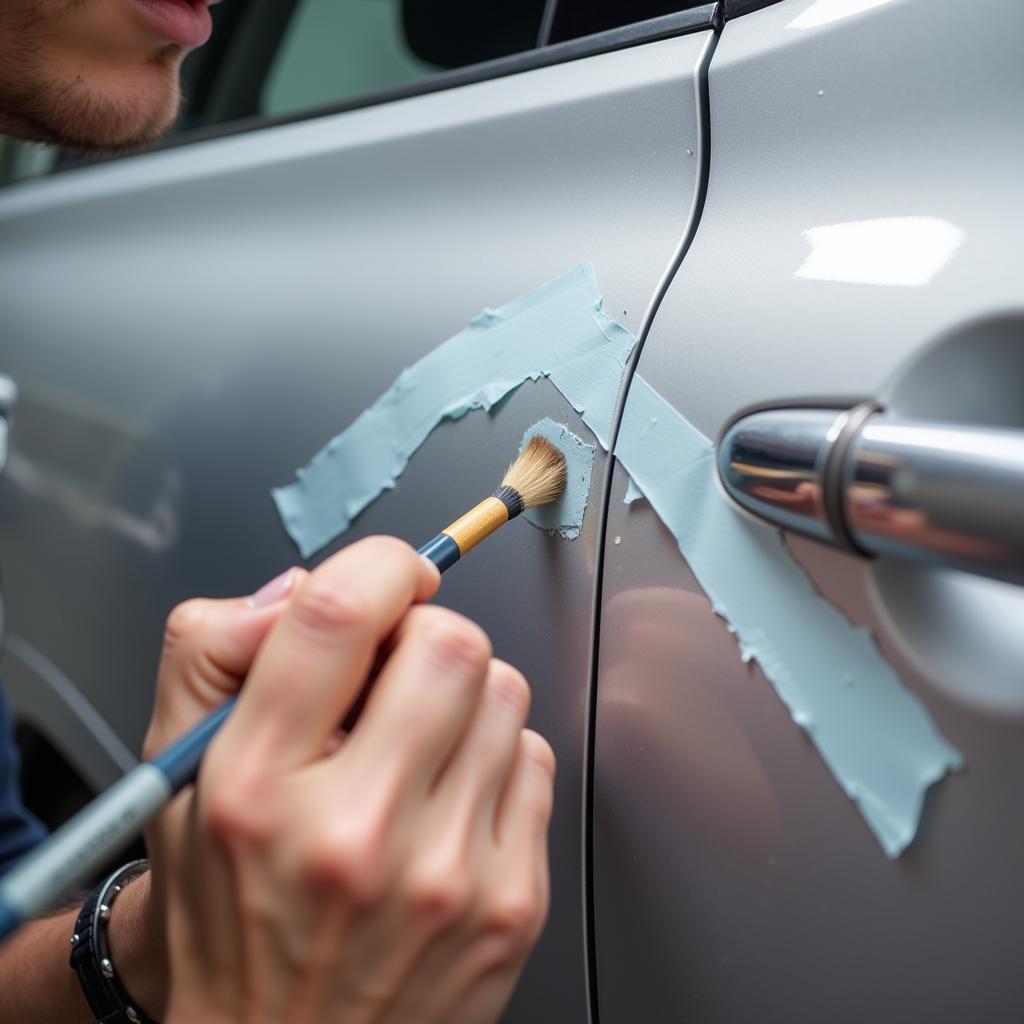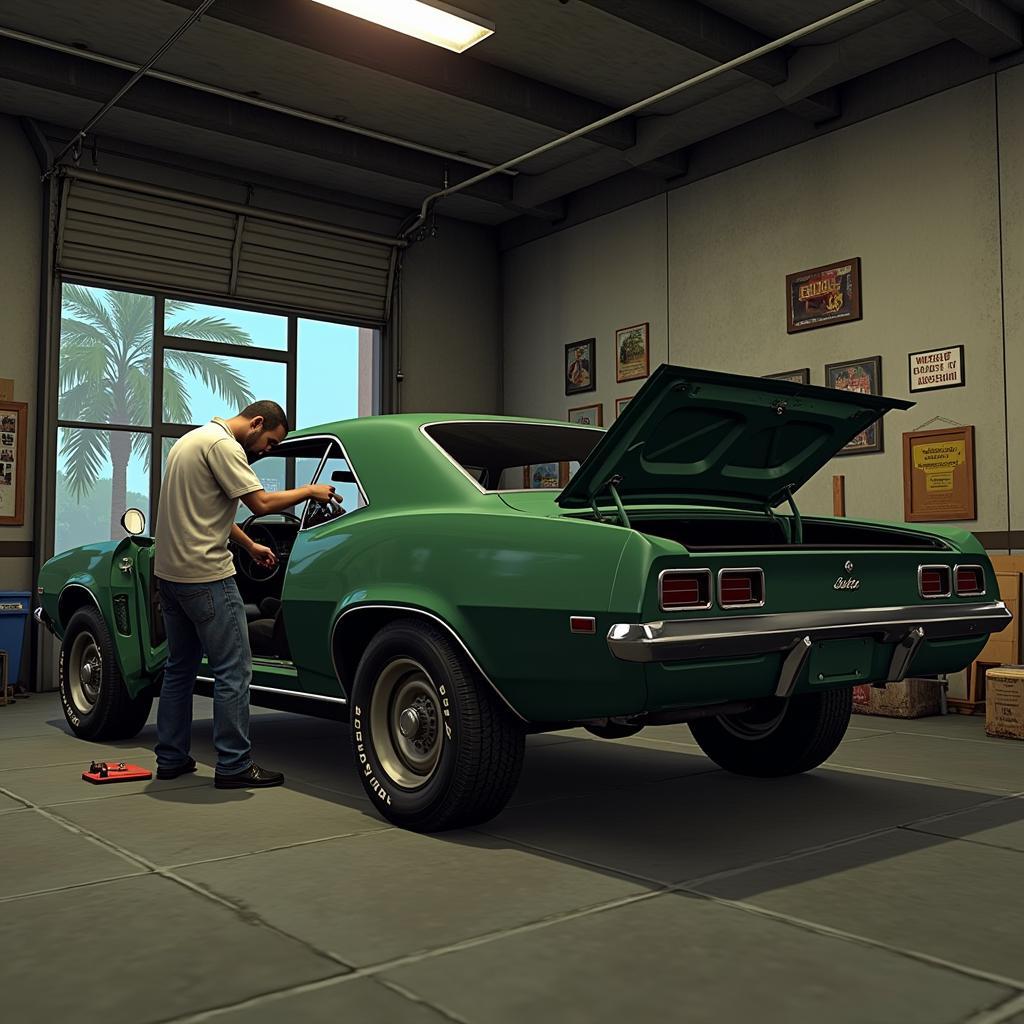Clear coat chipping on your car is a frustrating but common problem. Whether it’s from rocks, bugs, or simply the wear and tear of daily driving, those unsightly chips can detract from your car’s appearance and even lead to more serious paint damage like rust. This guide will walk you through the steps to effectively fix clear coat chipping and restore your car’s finish.
Fixing clear coat chips is more than just an aesthetic concern; it’s about protecting your car’s value and preventing further damage. Minor chips can be addressed with DIY methods, saving you a trip to the body shop. However, for larger or more complex chips, professional help might be necessary. This article will cover both scenarios, providing you with the knowledge to make the best decision for your situation. See how simple solutions can make a difference. how to fix chip in car paint
Why is My Car’s Clear Coat Chipping?
Understanding why your car’s clear coat is chipping is crucial for prevention. Common culprits include:
- Rock Chips: Small stones and debris kicked up by other vehicles can impact your car’s paint, causing chips in the clear coat.
- UV Damage: Prolonged exposure to sunlight can degrade the clear coat, making it brittle and prone to chipping.
- Bird Droppings: The acidic nature of bird droppings can etch into the clear coat if not removed promptly.
- Improper Washing Techniques: Using abrasive materials or harsh chemicals can damage the clear coat.
- Tree Sap: Similar to bird droppings, tree sap can also damage the clear coat if left to harden.
How to Fix Small Clear Coat Chips
 Fixing Small Clear Coat Chips
Fixing Small Clear Coat Chips
For small, shallow chips, a DIY approach can be effective. Here’s a step-by-step guide:
- Clean the Area: Thoroughly wash and dry the affected area. Use a wax and grease remover to ensure proper adhesion of the touch-up paint.
- Apply Touch-Up Paint: Using a fine-tipped brush or a touch-up pen, carefully apply a small amount of touch-up paint directly to the chip. Less is more; multiple thin coats are better than one thick coat.
- Level the Paint: If necessary, use a leveling agent to smooth out the touch-up paint and blend it with the surrounding clear coat.
- Apply Clear Coat (Optional): For deeper chips, you may want to apply a thin layer of clear coat after the touch-up paint has dried.
- Polish and Wax: Once the repair is complete, polish and wax the area to restore shine and protect the repair.
How to Fix Larger Clear Coat Chips
Larger, deeper chips often require more extensive repair and may be best left to professionals. However, if you’re comfortable with DIY repairs, here’s a general approach:
- Sand the Area: Use fine-grit sandpaper to smooth the edges of the chip and remove any loose paint or clear coat.
- Apply Primer (If Necessary): If the chip has reached the base coat or metal, apply a thin layer of automotive primer.
- Apply Touch-Up Paint: Apply several thin coats of touch-up paint, allowing each coat to dry before applying the next.
- Sand and Level: Once the touch-up paint is dry, sand it smooth with fine-grit sandpaper and a leveling agent.
- Apply Clear Coat: Apply several thin coats of clear coat, ensuring adequate coverage and blending with the surrounding area.
- Polish and Wax: After the clear coat has cured, polish and wax the area to restore shine. For advice on fixing cracks, see fixing paint cracks on car.
When to Consult a Professional
While minor clear coat chips can be addressed with DIY methods, more significant damage often warrants professional attention. Consult a professional if:
- Rust is Present: Rust requires immediate attention to prevent further damage.
- The Chip is Deep: Deep chips that expose the metal require specialized repair techniques.
- The Damage is Extensive: Multiple chips or large areas of damage are best handled by professionals. For example, check out this article on fixing chips in fiberglass: [how to fix chips in fiberglass on front of car](https://autotippro.com/how to fix chips in fiberglass on front of car/).
Preventing Clear Coat Chipping
- Regular Washing and Waxing: Keeping your car clean and protected with wax can help prevent clear coat damage. Learn more about addressing paint issues after accidents: how to fix accidebt paint car.
- Parking in Covered Areas: Parking in a garage or under a carport can protect your car from the elements and falling debris.
- Touch-Up Chips Promptly: Addressing chips as soon as they occur can prevent further damage and rust. You can learn more about fixing paint chips on the hood here: fixing paint chips on car hood.
- Using Paint Protection Film: Consider applying a paint protection film to vulnerable areas like the hood and front bumper.
In conclusion, How Do You Fix Clear Coat Chipping On Your Car? It depends on the severity. Small chips can be easily tackled with DIY methods, while larger ones might necessitate professional help. By understanding the causes of clear coat chipping and taking preventative measures, you can keep your car looking its best. For any questions or assistance, contact AutoTipPro at +1 (641) 206-8880 or visit our office at 500 N St Mary’s St, San Antonio, TX 78205, United States.





Leave a Reply